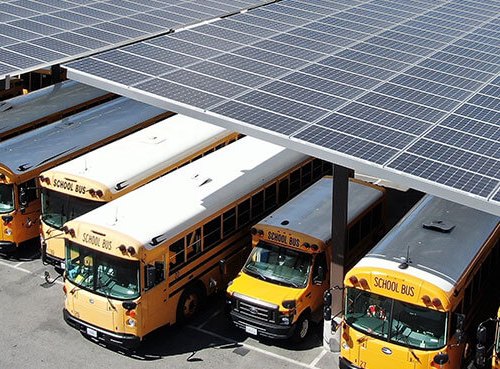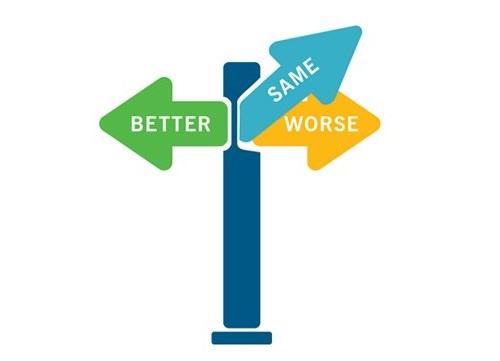The Unguarded Truth
What College Presidents Need to Know to Be Successful in the
Next Decade
Decision-makers in education are increasingly balancing competing priorities. And finding time to vet complicated purchases can be challenging, possibly leading to costly indecision or poor decisions based on use of guarded data.

What is guarded data? It’s information provided to administrators and is designed to safeguard certain programs, people or data. It may also be provided to elicit a desired response or investment.
When it comes to energy and asset management spend, relevant decision data often travels through several channels, which can impact the quality of the data.
Occasionally, by the time data reaches leadership, education executives are missing the required accurate content and relative context needed to get a full picture of the project at hand.
Being aware of communication challenges when making decisions about your facilities is paramount for effective leadership. So, as you plan for your school’s success during the next decade, here are a few things you should keep in mind in respect to your school’s energy and asset management strategies:
1. Know when to take a second look. Set aside any preconceived notions about energy audits, asset assessments, performance contracting, shared savings and outsourcing. These services have evolved over the past 20 years and can be beneficial to your energy asset management strategies. When delivered by a trusted professional, they may be a solution to some of your most common challenges and positively impact your operations and goals.
2. Know when you need outside opinions. Have you received accurate information? Can it be backed up with specific data and facts? When it comes to capital spend and savings, it’s OK to exercise caution and challenge assumptions. At the end of the day, you want to make sure that you and your staff are making decisions based on accurate data. Creating energy and asset management strategies can be very complex and difficult for even the most experienced managers, so it’s important to take a step back to make sure the information you have been given was fully vetted and researched.
3. Know when there is more to the story. Has everyone been heard? Far too often, education executives get their asset decision-making information from a single channel that may lack broader context. Take time to regularly call all stakeholders and make certain they have had opportunity to voice their opinions. And if you’d like to foster a more candid discussion in order to better uncover quality data, consider using an external facilitator to help promote dialogue among staff.
4. Know when to consider other pathways. Understand what deferred maintenance is really costing your school. Facility managers are often rewarded for their efforts to extend asset life and avoid capital spend. It is important to know when to extend asset life and to know when an asset is an energy and maintenance burden.
5. Know the true costs of assets. Understand where true costs of ownership expenses may be hidden away. Often, assets simply are not properly maintained for a variety of reasons. Need for additional expertise, attention to detail, oversight, and time for continuing education are just a few factors that can lead to increased cost of ownership. Ask yourself, “How do I track costs of maintenance agreements, lost energy and unexpected capital spend for repairs that could have been prevented in a more efficient system?”
6. Know your employees’ capabilities. In education, there is serious competition for highly skilled employees. Take a moment to assess the skill level of in-house technicians who protect your assets. If you already have employees trained in highly sought-after skill sets, it’s important to have a retention and replacement plan in place. Also, finding the balance of outsourcing highly skilled trades can often deliver more consistent asset management with less risk while saving money. This also eliminates retention and replacement issues and provides a higher level of oversight to critical assets.
7. Know why people say things. Effective asset management should consider executing a plan that prevents the need for “maintenance heroics.” Having a highly experienced and diverse partner or consultant can often help administrators utilize the amplified strengths of your staff while expanding the discussion to consider broader alternatives and perspectives. Occasionally, it is valuable to disrupt normal decision-making channels and communication to allow for creativity and renewed vision.
8. Know how to properly leverage technology. In facilities, we have adopted a great deal of control schemes to help operate more efficiently. In most cases though, your capable staff simply does not have the time and skill level to continuously inspect and perfect these schemes. New artificial intelligence (AI) technology is available to take charge of this process by connecting your campus to the AI network. The outcomes can be remarkable when paired with proper engineering oversight. In essence, your systems and assets can be recommissioned and inspected daily without labor costs!
9. Know your management team capabilities and workload. How capable are key decision-makers in evaluating asset and energy initiatives and spend? Understanding energy, markets, rates, trends, resiliency, microgrids, carbon calculations, rate structures, rebates, and asset management can be time consuming and quite difficult. To have only one person – or even two people – manage and communicate these needs requires a significant commitment. You might ask, “Who can evaluate their recommendations?” Savvy administrators will balance internal talent with cost-effective, capable and diverse energy partners.
10. Know where this risk is carried. Every campus has great partners that work together to keep things running. But what are the motivating factors for everyone involved in these relationships? Dollars spent in the partnership process also translate to total cost of operations. Keep a keen eye on outcomes rather than repetitive spend, expansion and replacement of infrastructure. Follow the risk – whichever party is carrying this risk is most likely controlling the outcomes. Also, remember to understand that “some expertise” is quite different than achieving the “best collaborative pathway.”



